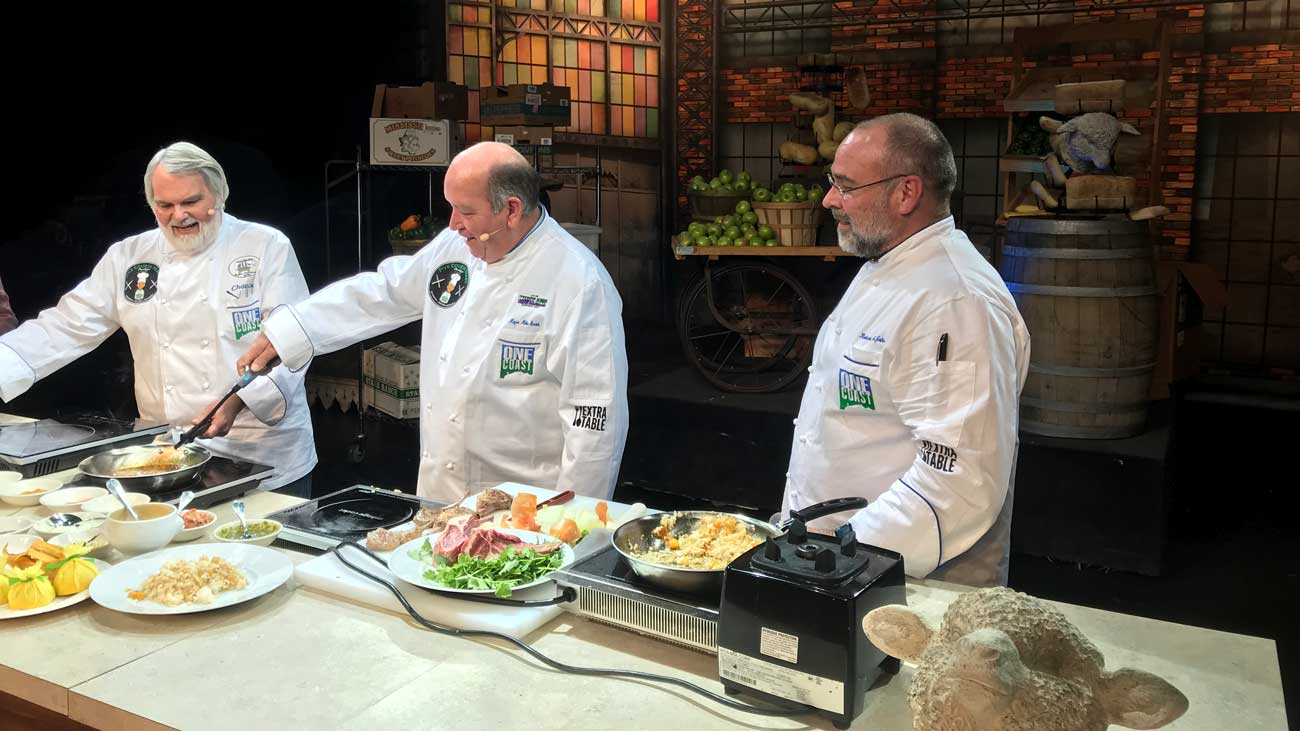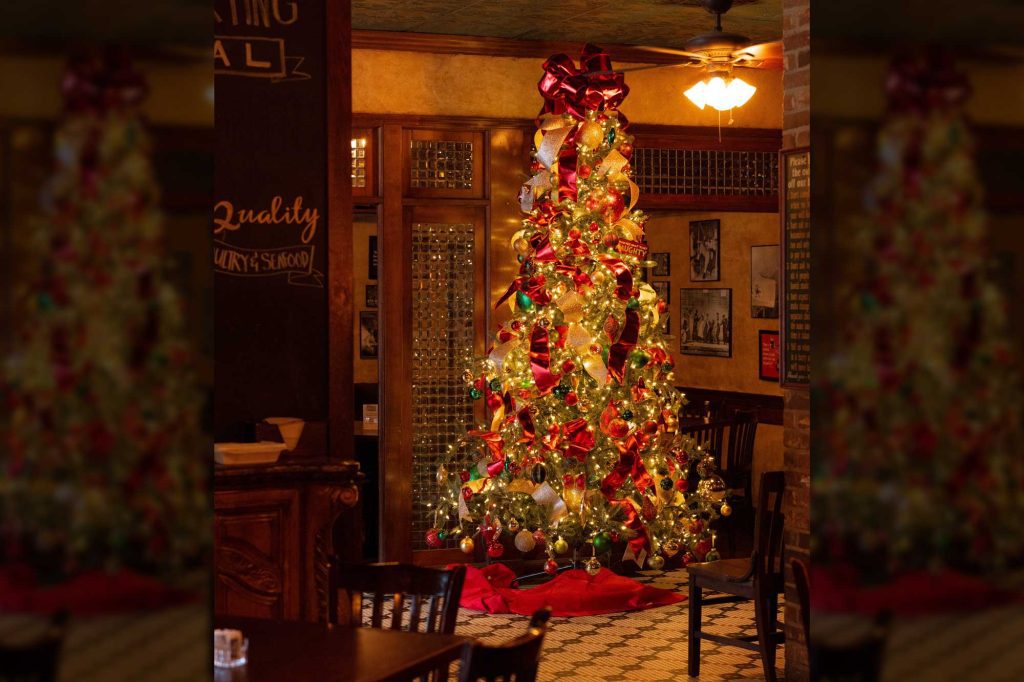I planted an organic two-acre garden a few months ago to raise fresh fruits and vegetables for our restaurants. Several weeks after the plants began sprouting, I started looking for beehives.
Truthfully, I wasn’t sure why I needed a beehive beside the fact that bees pollinate plants, and I had heard a few old-timers at the farm and garden store talk about how the best gardens had beehives in the vicinity. I asked my friend, Perry, at the garden store to recommend a beekeeper, and he gave me the name of a local man named Roy Clingon. I called Roy, and the next day I had a hive filled with 40,000 Italian Honeybees sitting next to my garden.
It was quite an innocent entree into beekeeping, but the more I talked to Roy about bees and the inner-workings of the hive colony, the more fascinated and enthralled with the hard-working insects I became.
All of that fascination was enough to get me interested in pollinating a garden, but it wasn’t until I tasted the honey that came from Roy’s bees, that I became a disciple. In a matter of days, I went from purchasing bees for the health of the garden, to keeping bees so they will make honey for the restaurants and my family, to asking Roy when I could get more hives so that I can start a true apiary.
Bees are the only insects that produce food for humans, and Clingon’s honey is the bee’s knees. One taste, and I knew what I wanted to use in our restaurants and in my home. It tasted more local, clean, and pure than anything I have tasted.
I spent two full days last week in a series of seminars about bees and beekeeping. The more I learned the more fascinated I became.
The bee world is all about the queen, who works hard laying approximately 2,000 eggs a day from January through October. The other 39,999 bees in that hive are working just as hard and exclusively for her and the betterment of her hive. The queen gives off a pheromone that the other bees spread throughout the hive. This pheromone lets the bees know that she is alive, laying eggs, and in good health. If the queen is weakened or removed from the colony, the bees will create another queen to take her place.
Bees have their pollen-collecting job down pat, and they should, because they’ve been producing honey for at least 150 million years. Bees travel up to two miles to gather pollen and nectar, but before they leave the hive they are given the flower’s exact location by other bees that fly in a specific pattern outside of the hive. It’s like insect GPS. Amazing.
A hive consists of one queen, several hundred drones (bees whose specific duty is to mate with the queen), and tens of thousands of worker bees, which do all of the work, and there is a lot of work to be done in their short, six-week lifespan.
Workers build the honeycomb— a hexagonal cell 2/1000-inch thick, able to support 25 times its weight— and produce honey. To make one pound of honey, workers in a hive fly 55,000 miles and tap two million flowers. Pretty remarkable, especially since each healthy hive produces approximately 50-75 pounds of honey, and one worker can only produce 1/12th of a teaspoon of honey in its lifetime.
Bees regulate the temperature in their hive by lining up to fan their wings in unison to cool the hive. When the temperature gets close to 100 degrees, the bees will stop collecting pollen and start collecting water, which they bring to the hive for cooling.
Clingon’s bee yard is only a mile or so away from my garden, so I’m keeping my fingers crossed that my honey will taste as good as his. I now have two hives, one for each of my children. Hers is pink. His is purple. Though I’ve got a bee in my bonnet, and I plan to purchase a few dozen more in the coming years.
My current business card reads: “Robert St.John, author, chef, columnist, world-class eater.” Now I can proudly add farmer and beekeeper to the list.
Key Lime Grilled Shrimp with Pecan-Spiked Rice
For this recipe you need the zest and juice from Key Limes. Use the fine-cut side of a cheese grater to remove the zest from the limes before juicing them.
36 Large Shrimp, peeled, deviened
1/4 cup No-Stick Grilling Marinade for Seafood
2 Tbl Honey
1 tsp Key Lime Zest
2 tsp Kosher Salt
1/2 tsp Black Pepper, freshly ground.
Place the shrimp in a mixing bowl and add the marinade, honey and lime zest. Marinate for one hour before grilling. Place a grill screen over direct-high heat. Once the grill screen is preheated, sprinkle the shrimp with the salt and pepper and grill for 6-8 minutes, turning once while cooking.
Key Lime Beurre Blanc
2/3 cup White Wine
1 Tbl White Vinegar
1/3 cup Fresh Key Lime Juice
1/4 cup shallots, finely chopped
1 tspl garlic, minced
1/4 cup whipping cream
1 pound unsalted butter, cut into small cubes, then chilled
1 teaspoon Kosher Salt
1 tsp Key Lime Zest
1 Tbl Fresh Chives, chopped
In a small saucepan over medium heat, reduce wine, vinegar, lime juice, shallots, and garlic. When almost all liquid has evaporated, add cream. Reduce cream by half. Reduce heat slightly and incorporate the butter adding a few pieces at a time. Stir constantly using a wire whisk until butter is completely melted. Remove from heat. Strain the sauce and add the lime zest and salt. Hold in a warm place until needed. Stir in the fresh chopped chives just before serving.
Pecan Spiked Rice
2 Tbl Unsalted Butter
1/2 cup Yellow Onion, small dice
1/4 cup Shallot, minced
1 tsp Kosher Salt
1 Bay Leaf
1 cup White Rice
2 cups Chicken Broth, hot
1/4 tsp Black Pepper, freshly ground
1 cup Pecan Pieces, chopped and toasted
Melt butter over medium heat in a 1 1/2 quart sauce pot. Add onion, shallot, salt, and bay leaf and cook 4-5 minutes, stirring often to prevent browning. Add the rice and continue to cook until the grains of rice are thoroughly heated. Stir in the chicken broth and black pepper and bring the broth to a simmer. Lower the heat and cover the rice Cook 18-20 minutes, until all liquid is absorbed. Stir in toasted pecans.
To serve, place the rice on serving dishes. Top the rice with 6 shrimp and ladle the sauce over the shrimp.
Yield: 6 servings



